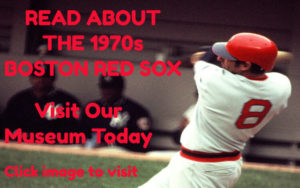The Long Hangover Of The 1987 Boston Red Sox
The Boston Red Sox endured their fair share of heartbreaking finishes through an 86-year championship drought. One thing they often did was make credible bounceback efforts. The one-game playoff loss to the Yankees of 1978 was followed up by 91 wins in 1979. The 2003 devastation at the hands of the Yanks was followed by the historic title run of 2004. The most famous of Boston’s baseball losses was 1986. But 1987 would be different. There was no redemption–not even a feisty effort to come off the mat. The 1987 Boston Red Sox were a train wreck from Day One.
It started in spring training. Red Sox manager John McNamara told the players to put last year behind them—as though making it to Game 7 of the World Series constituted an epic fail. The tone was set.
Then catcher Rich Gedman had a contract dispute and did not report to camp. Gedman wasn’t signed until the start of May. Marc Sullivan and John Marzano were inadequate as replacements and Gedman had a poor year after he returned to the fold.
Jim Rice was now 34-years-old and while the future Hall of Famer’s on-base percentage was a respectable .357, his power and dipped and he only hit 13 home runs. Don Baylor, the veteran DH, saw his power numbers slip and only slugged .404. Dave Henderson, a hero of the previous October, saw his batting average plummet to .234.
The Red Sox could still score runs. Wade Boggs batted .363 and won the third of what would be four consecutive batting titles. Boggs also hit 24 home runs, easily his career high. Marty Barrett posted a solid .357 on-base percentage. And some young outfielders started to make their mark. Ellis Burks, Todd Benzinger and Mike Greenwell were all productive hitters.
The success of the young outfielders moved Dwight Evans to first base, but the 35-year-old kept putting up numbers offensively. In fact, he posted an on-base percentage of .417, slugged .569, hit 34 home runs and drove in 123 runs. Those are MVP-caliber numbers. Evans finished fourth in the voting in spite of his team’s poor play.
There were enough success stories that Boston ranked fourth in the American League in runs scored. And Roger Clemens, fresh off his breakout year of ’86 when won both the Cy Young and MVP awards, went on to win another Cy Young Award in ’87.
But if Clemens wasn’t on the mound, the pitching in Fenway Park was a disaster. Bruce Hurst won 15 games, but the ERA of the #2 starter jumped to 4.41. Every one else who got a shot in the rotation had an ERA over 5. The bullpen was no better and the Red Sox staff ended up ranked 12th in the AL in ERA.
The season started in Milwaukee. The Brewers were an AL East franchise prior to 1998 and they used the Red Sox to get off to a blazing start. Boston lost all three games in old County Stadium. The Red Sox went on to play reasonably well against contending Toronto, winning four of seven April matchups with the Blue Jays. But a road trip from April 24 to May 3 would be devastating.
The trip started in Texas with a ten-inning loss on a Friday night. There was another extra-inning loss to the Rangers on Sunday. By the time the trip was over, Boston had lost eight of ten and was looking at a 10 ½ game hole in the AL East. And, this being the days prior to the realignment of 1994, there was no wild-card fallback to pursue.
The Red Sox hit the Memorial Day turn at 17-25, still 10 ½ out. They weren’t out of it—Detroit, who would ultimately win the AL East, was 20-21 and seven games back. But the Tigers had something the Red Sox didn’t and that was pitching. It showed in June when Boston lost six of seven to Detroit. Those games established who was going to bounce back and contend and who was dead. The Red Sox were dead.
There were still some nice moments. The Yankees had moved into first place by June and Boston took two of three in a weekend set at Fenway. Clemens won the Sunday rubber match with a complete-game win. The Red Sox also swept the Brewers. But Boston never could get the deficit into single digits and a West Coast trip just prior to the All-Star break resulted in a 3-8 record and 13 ½ game hole in the division.
At 41-47, the Red Sox were not going to get back into the race, especially not with the Tigers and Blue Jays on their way to the two best records in baseball, the Brewers en route to 90-plus wins and the Yankees in contention and actually leading the pack at the All-Star break. The balance of the season was about saying goodbye to players and enjoying some signature moments.
Bill Buckner was released on July 23. Baylor and Henderson were traded at the end of August, each landing with eventual division winners in Minnesota and San Francisco respectively.
In the meantime, the Red Sox swept an August series from the eventual World Series champion Twins. Boston delivered their rivals from the Bronx a big blow right after Labor Day when the Red Sox won two of three. Clemens again won the rubber match and the fading Yanks were pushed 6 ½ games off the pace.
This doesn’t mean there was a September surge—the Red Sox went 2-8 in games against the Tigers and Brewers. And Boston finished sub-.500 at 78-84. The last high point came on the final day of the season when Clemens threw a two-hit shutout at Milwaukee for his 20th win, a milestone that may well have secured him the Cy Young Award. Clemens received 21 of 28 first-place votes in winning the award.
But personal milestones and isolated nice moments were all the 1987 Boston Red Sox could offer the faithful after the heartbreak of October 1986. The good news is that better days were around the corner—the Sox would win the AL East in 1988 and again in 1990.


